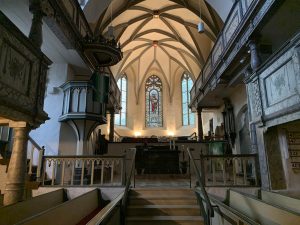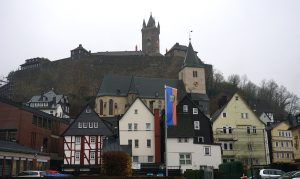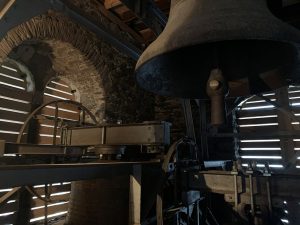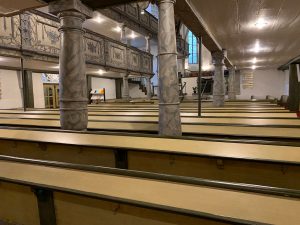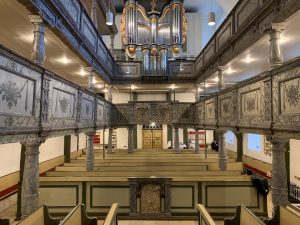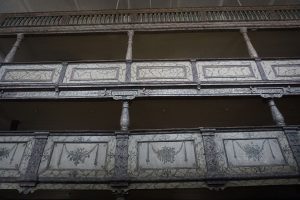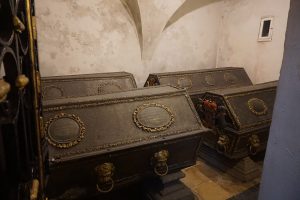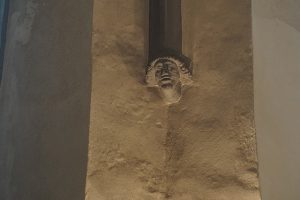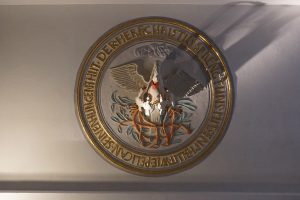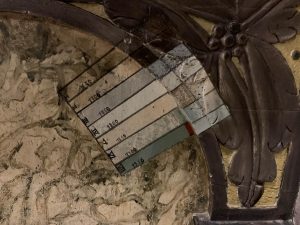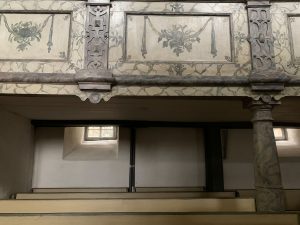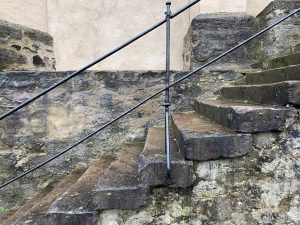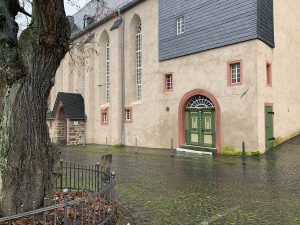The Protestant Town Church of Dillenburg will be
open to the public from 19 June to 03 September 2023.
Please note the opening hours.
Opening hours:
July 1 to August 31, 2024
Monday to Friday
from 11.00 am to 12.00 pm (without guided tours)
from 2 p.m. to 3 p.m. (volunteers are available to answer questions)We kindly ask for donations for the preservation of our historic town church.
Requests for extra guided tours outside the stated times
> E-Mail: kirchenfuehrungen@ev-kirche-dillenburg.de
> Phone: +49 (0) 2771 53 06
The beautiful Protestant town church of Dillenburg is more than 500 years old. The chancel is believed to be the oldest part of the church and is covered by a magnificent starry vault. The chancel was probably used originally and exclusively for funeral purposes. The key stone in the high chancel has a flat relief showing the lion of Nassau with its seven shingles, which is meant to be a reference to bthe Count of Nassau as the patron of the church. The original church was situated south of Dillenburg in the little village of Feldpach, and Count John V asked the Archbishop in Trier to transfer the parish church to Dillenburg, because more and more people were settling near the castle. On the third day of June 1491, the current church was consecrated as the ”Johanniskirche“ (church of John). Today, the name is only found in the name of the ”Johanniskantorei“ (church choir of John).
The construction and completion of the tower was not finished until the beginning of the 16th century. For a little less than 40 years, the church was a Catholic church. However in 1521, Wilhelm der Reiche (William the Rich) got to know Martin Luther at the Reichstag in Worms, and 8 years later, in 1529, he appointed Heilmann Bruchhausen as his court chaplain who then spread Luther’s Protestant doctrine all over the earldom. Quite soon, in 1594, the popularity of this church grew such that there was not sufficient space for all the believers, and so at the long sides two galleries were built lying, one on top of each other. The third gallery on the hill side was not built before the second half of the 18th century. In the chancel, which is also situated on the hill side, there is the access to the royal crypt, where four pewter coffins were installed covered by a two hip cross vault. In 1680, the crypt was set up by Fürst Heinrich von Nassau (1641–1701) (Prince Henry of Nassau). The epitaph on the opposite wall shows him together with his wife Dorothea Elisabeth (1646–1691) (Dorothy Elizabeth).
On the wall behind the altar, a notice sets out the importance of this famous site and how its influence reaches far beyond the borders of Nassau. The inscription says:
Grabstätte der Nassau-Dillenburger Grafen- und Fürstenfamilie
Hier ruhen die Ahnen des preußischen und holländischen Königshauses, Graf Wilhelm der Reiche, gest. 1559 und
Juliane von Stolberg, gest. 1580, die Eltern Wilhelm des Schweigers, und dessen Bruder Johann VI., gest. 1606(Sepulchre of the Nassau-Dillenburg Royal family
Here, the ancestors of the Prussian and Dutch Royal Families rest in peace, Graf Wilhelm der Reiche, who died in 1559 and Juliane von 5tolberg, who died in 1580, the parents of Wilhelm des Schweigers (William the Silent) and his brother Johann VI (John VI), who died in 1606)
In the chancel, there is a very special treasure – a gravestone in the form of a heart. When Count John VI was buried in Breda in 1475, his heart was buried here so that it always remains in Dillenburg, his home town.
In the centre of the ceiling of the nave, there is the stucco relief of a pelican with four young birds. This work in the locket form dates from the last decade of the 16th century and bears the inscription:
Der Herr Christus sprengt uns mit seinem Blut, wie der Pelikan seinen Jungen thut.
(The Lord Christ sprinkles us with his blood the way the pelican does it with his young ones.)
Above the nave there is a room in which John VI founded a Latin school in 1551, that was in use for more then two hundred years. This school is the origin of today’s grammar school, the Wilhelm-von-Oranien-Schule (William-of-Orange-School).
From 1989–1990, the church was renovated. Owing to the findings, the restorer recommended the reconstruction of the baroque version which is the only one traceable throughout the times. The enfire interior painting thus got back its baroque slyle with a precision restorative work. In the course of fhese renovations, the Pro- testant parish also regained the baroque organ cabinet that had been in place between 1719 and 1880.
Nowadays, you see the outstanding beauty of the original cabinet which houses an organ with more than 2800 pipes in 46 registers on 3 manuals meeting the highest requirements. In the following years, the organ capabilify has been supplemented by further construction works. In 1993, it got three additional registers and in 1998, the return harmonium was installed, followed one year later by the aligning as well as the Wendel-Glockenspiel. In the year 2005, the organ gained a 32’ register so that at present 45 regisfers can resound. This is why today this organ is one of the most important and the most beautiful instruments in Hesse. On the seventh day of October 1990, it resounded for the very first time to honour the LORD and to delight the parish, and so the wish of the organ-maker, Messrs. Gebrüder Oberlinger from Windesheim, had come true.
A pointed arch portal leads into the basement of the tower covered with a hip cross vault, to the main entrance of the nave. In 1705 Prince William, who is buried in the lateral crypt, presented to the parish a baptismal cup and bowl. Prince Wiliam’s mother, Dorothy Elizabeth, donated two 17th century chalices and a plate for bread that are still in use if the occasion arises.
In the bell cage, there are three big steel bells that were founded as a substitute for the signal bell delivered during World War I. The bells are a B flat bell, a D flat bell and an E flat bell. Apart from these three new bells, also an old bronze bell from the 16th century belongs to the chime of the town church. This precious small F bell with its 800 kg was founded here on the spot in 1510. The young Count William the Rich and his first consort Walpurga of Egmont were present when the old ”fire bell“ was inaugurated.
Editor:
The parish council of the Protestant parish in Dillenburg
Revised German version: Renate Schlappach and Ursula Krug-Richter
English translation: Carmen Wechselberger
